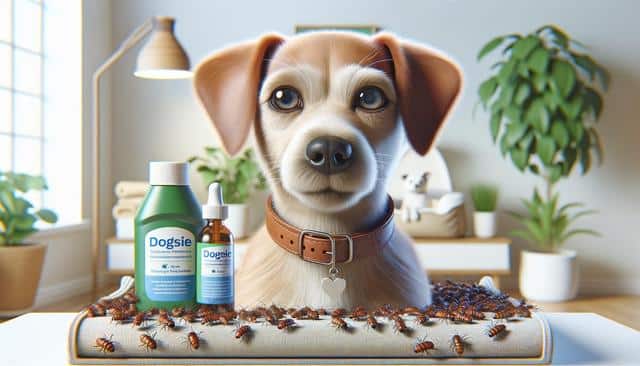
A Practical Guide to Keeping Your Dog Comfortable and Protected from Fleas
Recognizing Flea Infestation in Dogs
Spotting the signs of fleas on your dog is the first step in tackling the issue. Fleas are small, wingless insects that feed on your pet’s blood, causing discomfort and potential health problems. Watch for excessive scratching, biting, or licking, particularly around the base of the tail and along the hindquarters. A telltale sign is the presence of flea dirt, which looks like tiny black specks on your dog’s skin. To identify flea dirt, place some on a white paper towel and add a drop of water. If it turns reddish-brown, it’s likely flea dirt. Your dog’s restlessness and visible skin irritations such as redness and bumps are also indicators of a flea infestation.
Exploring Effective Flea Treatments
Once you have identified fleas, selecting the right treatment is crucial. There are numerous options available, ranging from topical treatments to oral medications. Topical treatments are applied directly to your dog’s skin and can kill fleas at various life stages, often providing a month of protection. Oral medications come in the form of chewable tablets that deliver fast-acting results, sometimes killing fleas in a few hours. It’s important to consult your veterinarian to choose the treatment that suits your dog’s needs and health condition. For a natural approach, you could explore options like diatomaceous earth or essential oils, though these should be used with caution and professional guidance.
Developing a Flea Prevention Plan
To keep fleas at bay, maintaining a prevention plan is essential. Regularly grooming your dog with a fine-tooth flea comb can help detect and remove fleas. Bathing your dog with a vet-approved flea shampoo can also be effective in eliminating fleas and their eggs. In addition to personal hygiene, ensure your home environment is flea-free by vacuuming frequently, paying special attention to carpets, bedding, and furniture. Washing your dog’s bedding weekly in hot water will help eliminate any remaining fleas or eggs. Consider using insect growth regulators in your home to prevent the development of flea larvae and pupae.
Utilizing Flea-Repellent Products
There is a wide array of products designed to repel fleas, including collars, sprays, and spot-on treatments. Flea collars can provide long-term protection, releasing active ingredients that kill and repel fleas. Flea sprays are versatile, offering both immediate relief and prevention by applying directly to your dog’s coat and your home environment. Spot-on treatments are another convenient option, providing protection for up to a month. Always ensure any product used is appropriate for your dog’s age, size, and health, and follow the manufacturer’s instructions carefully.
Monitoring and Adjusting Your Approach
Keep in mind that flea prevention is an ongoing process that may require adjustments. Regularly monitor your dog for signs of fleas, particularly during peak flea season in warm and humid climates. If you notice persistent flea activity, reassess your prevention strategy, and consult your veterinarian for advice on alternative treatments or combination approaches. Seasonal factors, changes in your dog’s environment, and health condition might necessitate a different prevention method. Stay informed about new products and techniques to keep your prevention plan effective and your dog comfortable.
Conclusion
Protecting your dog from fleas is a vital aspect of pet care. By recognizing the signs of infestation early, choosing appropriate treatments, and implementing a robust prevention plan, you can ensure your dog remains comfortable and healthy. Regularly reviewing and updating your strategies will help maintain a flea-free environment, providing peace of mind for you and your furry friend. Always seek advice from veterinary professionals to tailor your approach to your dog’s specific needs.